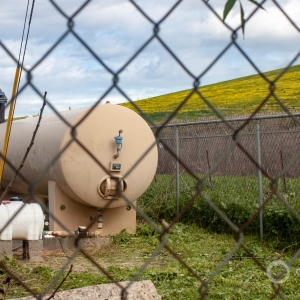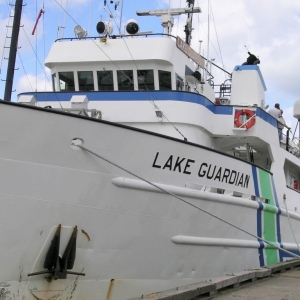The Stream, April 14, 2021: U.S. Communities Fail To Prepare For Flooded Future
YOUR GLOBAL RUNDOWN
- Communities across the United States are failing to prepare for increased rainfall and flooding.
- A plan to remedy flooding from sewage in an Illinois community isn’t enough to solve the problem, residents say.
- Farmers and Native American tribes in Oregon and California may not receive enough water to meet their needs this summer.
- Drought conditions in India’s Himachal Pradesh state are affecting the area’s water supply.
Las Vegas water officials are asking the state lawmakers to ban ornamental grass to conserve water.
“The public perception outside of Las Vegas is certainly much different – and has been for a long time – than the water conservation ethic within the community.” – Colby Pellegrino, Southern Nevada Water Authority water resources director. Las Vegas water officials are asking the Nevada Legislature to ban ornamental grass that no one walks on, the Associated Press reports. Officials say the grass requires four times as much water as drought-tolerant landscaping and removing it could reduce annual water consumption by about 15 percent.
IN RECENT WATER NEWS
California Report Tallies Hundreds of Failing Water Systems in the State
The release of an in-depth report gives California state regulators a detailed picture of how many small water systems are failing or at the brink of failure and what it would cost to bring them up to par.
The State Water Resources Control Board’s needs assessment found 326 public water systems that are consistently failing to provide drinking water that meets state and federal standards.
Another 617 public water systems are at risk of failing, and 611 state small systems, those that serve fewer than 25 people, are at high risk of exceeding health standards because of their location. These failing and at-risk systems are clustered in heavily agricultural regions like the Central Valley and Salinas Valley, as well as in Los Angeles, San Diego, and Sonoma counties.
In Case You Missed It:
HotSpots H2O: New Research Finds National Reform Vital for Jordan’s Worsening Water Crisis – Nearly all of Jordan’s lower-income populations will suffer from severe water insecurity by the end of the century without immediate and comprehensive national reform, according to a Stanford University study.
What’s Up With Water – April 12, 2021 – This week’s episode covers widespread water restrictions in Taiwan, California officials who are bracing for a dry summer, and a lawsuit filed by Alaska officials against major chemical companies over alleged groundwater contamination.
Flood Remedy Plan In Illinois Community Leaves Out Voices of Affected Residents
A plan to remedy flooding from sewage in Centreville, Illinois, is insufficient, according to many residents and community activists. Residents say that the local officials who authored a $22.9 million grant application to make repairs to the sanitary sewer system have failed to address the issue for years. The Guardian reports that the current conflict underscores the extent to which members of the community, which is majority Black, feel ignored by their political representatives.
TODAY’S TOP WATER STORIES, TOLD IN NUMBERS
1,400 IRRIGATORS
As the American West prepares for one of the worst droughts in recent years, around 1,400 irrigators and several Native American tribes in Oregon and California could go without the water they need for farming and sustaining endangered fish species. Al Jazeera reports that for the first time in 20 years, irrigators who farm on 91,000 hectares (225,000 acres) could receive little to no water, while Indigenous communities are also struggling to receive the water they need to protect fish species critical to their heritage.
700 WATER SUPPLY SCHEMES
Drought conditions in India’s Himachal Pradesh state are affecting around 700 water supply schemes, the Hindustan Times reports. Rising temperatures and little snow and rain in the Himalayan state has caused a 75 percent decline in water sources. Conditions are expected to be dry into May, further worsening the crisis.
ON THE RADAR
Communities in the United States are struggling to prepare for the risk of increased rainfall and flooding, the Independent reports. Standards for infrastructure, construction regulations and eligibility for floodplain insurance are based on outdated precipitation estimates. As extreme weather events become more and more common, communities fail to adequately protect themselves from flooding.
- Why it matters: As other regions of the United States prepare for the worst, the Great Lakes Region is frequently touted as one of the most climate-resilient places in the U.S., in no small part because of its enviable water resources. In the Great Lakes Ready or Not series, the Great Lakes News Collaborative explores what it may take to prepare the Great Lakes region for the future climatologists say we can expect.
Jane is a Communications Associate for Circle of Blue. She writes The Stream and has covered domestic and international water issues for Circle of Blue. She is a recent graduate of Grand Valley State University, where she studied Multimedia Journalism and Women, Gender and Sexuality Studies. During her time at Grand Valley, she was the host of the Community Service Learning Center podcast Be the Change. Currently based in Grand Rapids, Michigan, Jane enjoys listening to music, reading and spending time outdoors.







Leave a Reply
Want to join the discussion?Feel free to contribute!